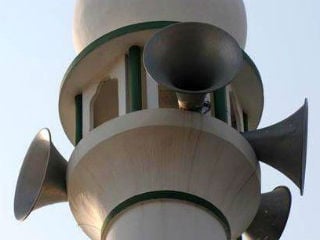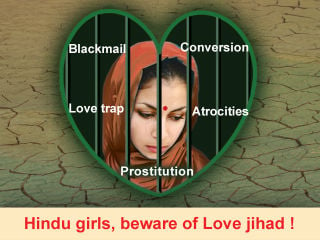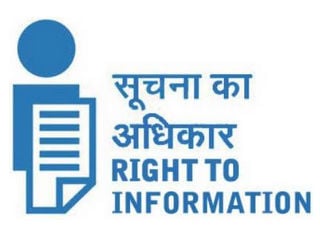There are many laws, rules and regulations in India which relate to animals. They cover the preservation and protection aspects. The focus of this article is the use of law, rules and government structure through for prevention of illegal and cruel slaughtering of animals and in particulars Cows/Cattle.
The cow-protectors keep on finding illegal transportation of cattle for slaughtering purpose. The vehicles involved in illegal transportation of cattle are difficult to track but the slaughter houses are comparatively easier to track and the illegal transport normally ends either in illegal export of cattle to Bangladesh. (Please read this file which explains the matter in short – click here ) or in a slaughter house which may be operating for domestic consumption or for export purpose (as India is second largest exporter of meat in the world)
The animal activists face lots of problems in protecting the cattle as it involves a system whose financial interests are involved in the butchering. Therefore this article tries to put some light on some laws which may help the activists to reduce/strop the problem in the longer run. The laws which are considered in the article are basically central government laws.
This article deliberates upon the laws which are not known generally or they are not implemented. It also tries to guide the actions that can be taken by the activists as there are some laws which need to be implemented and some laws that need to be made tougher. In all cases an activist can use the laws or try to pressurize the Government throught constitutional means to change the laws to deal the situation with a strict hand.
The legal situation is as follows,
1. The Prevention of Cruelty Animals Act,1960
(Click here to view a copy of Act)
This Act can be divided into some broad categories which are
- The Creation of a statutory authority dedicated to the welfare of animal in the country to be known as “Animal Welfare Board of India”.
- Appointments of Honorary Animal Welfare Officer (HAWO) by Animal Welfare Board
- Defining various offences relating to animals and the punishments therefore
- Authorizing the Government to formulate various rules as and when situation arises to safeguard the welfare of animals in the country
1A. Animal Welfare Board of India
This Board is situated in Chennai.
Website : http://www.awbi.org/
Address : ANIMAL WELFARE BOARD OF INDIA, 13/1, Third Seaward Road, Valmiki Nagar, Thiruvanmiyur, Chennai- 600 041.
Phone : 044-24571024, 24571025 Fax: 044-24571016
E-mail : [email protected], [email protected]
The Board operates as apex body and advises Central Government is formulating policies regarding animals. It also empowers NGOs and individual animal activists to work on animal related issues in the country.
1B. Honorary Animal Welfare Officer (HAWO)
The Animal Welfare Board recognizes honorary animal welfare officer and the recognition by the Board helps the officer who is basically an activist working for better treatment to the animals. Click here to view the list of existing officers as published by the Board. Activists can contact them for help.
The duties upon him which are –
1. An Honorary Animal Welfare Officer (HAWO) is required to have working knowledge of the important provisions of the PCA Act, 1960 and the Rules made thereunder.
2. The HAWO should report to and convince the enforcement agencies of the State Government to take immediate remedial action in cases pertaining to cruelty/abuse of animals and inform the Board of the incident of cruelty immediately.
3. The HAWO is expected to sensitize the community so that incidents of cruelty to animals are reduced.
4. The HAWO should bring the incidents of cruelty to wild animals immediately to the notice of Wildlife Department.
5. The HAWO is not authorized to collect any fines, penalties in any form from the offenders/others also not to raid the premises/confiscate any animal. It will be considered as an offence. If any HAWO is found to indulge in such practices, the Board will be constrained to initiate legal action against such illegal activities.
6. HAWOs shall not misrepresent themselves as Board’s Members or use and print the logo of AWBI on their letterheads/visiting cards.
7. The HAWOs should endeavour to impart humane education training to have compassion for humane treatment of animals to the public in his/her area so as to bring awareness for animal welfare.
8. The HAWO is required mandatorily to submit a quarterly report of his/her activities to the Board.
Activists can
- always seek help from such officer
- try to get themselves registered with the Board as a HAWO
- If the activist find that the HAWO is not functioning properly and misusing his position, the activist can file a complaint to the Board.
1C. What amounts to cruelty on animals?
Section 11- Treating animals cruelly :
(1) If any person
(a) beats, kicks, over-rides, over-drives, over-loads, tortures or otherwise treats any animal so as to subject it to unnecessary pain or suffering or causes, or being the owner permits, any animal to be so treated; or
(b) (employs in any work or labour or for any purpose any animal which, by reason of its age or any disease) infirmity; wound, sore or other cause, is unfit to be so employed or, being the owner, permits any such unfit animal to be employed; or
(c) wilfully and unreasonably administers any injurious drug or injurious substance to (any animal) or wilfully and unreasonably causes or attempts to cause any such drug or substance to be taken by 15(any animal;) or
(d) conveys or carries, whether in or upon any vehicle or not, any animal in such a manner or position as to subject it to unnecessary pain or suffering; or
(e) keeps or confines any animal in any -cage or other receptacle which does not measure sufficiently in height, length and breadth to permit the animal a reasonable opportunity for movement; or
(f) keeps for an unreasonable time any animal chained or tethered upon an unreasonably short or unreasonably heavy chain or cord; or
(g) being the owner, neglects to exercise or cause to be exercised reasonably any dog habitually chained up or kept in close confinement; or
(h) being the owner of (any animal) fails to provide such animal with sufficient food, drink or shelter; or
(i) without reasonable cause, abandons any animal in circumstances which tender it likely that it will suffer pain by reason of starvation thirst; or
(j) wilfully permits any animal, of which he is the owner, to go at large in any street, while the animal is affected with contagious or infectious disease or, without reasonable excuse permits any diseased or disabled animal, of which he is the owner, to die in any street; or
(k) offers for sale or without reasonable cause, has in his possession any animal which is suffering pain by reason of mutilation, starvation, thirst, overcrowding or other ill treatment; or mutilates any animal or kills any animal (including stray dogs) by using the method of strychnine injections, in the heart or in any other unnecessarily cruel manner or;) solely with a view to providing entertainment
(l) confines or causes to be confined any animal (including tying of an animal as a bait in a tiger or other sanctuary) so as to make it an object or prey for any other animal; or
(m) organises, keeps uses or acts in the management or, any place for animal fighting or for the purpose of baiting any animal or permits or offers any place to be so used or receives money for the admission of any other person to any place kept or used for any such purposes; or
(n) promotes or takes part in any shooting match or competition wherein animals are released from captivity for the purpose of such shooting:
He shall be punishable in the case of a first offence, with fine which shall not be less than ten rupees but which may extend to fifty rupees and in the case of a second or subsequent offence committed within three years of the previous offence, with fine which shall not be less than twenty-five rupees but which may extend, to one hundred rupees or with imprisonment for a term which may extend, to three months, or with both.]
- (2) For the purposes of section (1) an owner shall be deemed to have committed an offence if he has failed to exercise reasonable care and supervision with a view to the prevention of such offence;
- Provided that where an owner is convicted permitting cruelty by reason only of having failed to exercise such care and supervision, he shall not be liable to imprisonment without the option of a fine.
- These offences are cognizable
As you can understand, this punishment is so small that it can’t intimidate a criminal and keep him away from committing the crime.
Interestingly – Section 28 of the Act reads as follows;
28. Saving as respects manner of killing prescribed by religion: Nothing contained in this Act shall render it an offence to kill any animal in a manner required by the Religion of any community
Everyone knows that in slaughtering the animal in ‘halal’ method, the animal is subjected to pains. Despite this, the earlier Congress Government allowed this by the above provision. This needs to be changed.
Activists should fight for a tougher law – as the legislature of the Country can amend the laws, we need to pressure the Government to amend the law and increase the punishment.
- Activists should ask elected representatives such as Member of Parliaments or Members of legislative assemblies to work on this.
- Mass agitations should be held on this issue
- Number of letters should be written to change the laws as also taking other social media measures to propagate the issue.
1D. From the powers given from this Act the Government has laid down various rules.
We will be discussing important rules herein below.
Prevention of Cruelty to Animals (Establishment and Regulation of Societies for Prevention of Cruelty to Animals) Rules, 2001
Click here to view the rules : English , Hindi
- As the name itself provides, the rules mandates that there should be a society for Prevention of Cruelty to Animals in every district. Click here to view a government resolution for the State of Maharashtra as a reference
- However, a question would arise as to whether such societies are formed in every district? if so formed are they functioning ? if functioning then the efforts are sufficient ?
What the activists can do ?
- Get the information under RTI Act as to the establishment/functioning of the society. As the society is controlled by
- Government, it has to provide information under the RTI.
- Create public awareness about the issues arising out of the research
- Public Interest Litigations can be filed for establishment of such societies in a State/district or for the efficient and proper functioning of the societies.
- If the societies are working then the activists can avail its help. Even otherwise various issues can be raised before the office bearers of the society so that the issues can be addressed properly by the Government.
Prevention of Cruelty to Animals (Slaughter House) Rules, 2001
Click here to view the rules : English , Hindi
These rules are very important as they govern the slaughter houses in the Country. (The reader is requested to read the rules in full as it.) The rules provide;
- No animal can be slaughtered at any place other than a slaughter house.
- How the inside structures of a slaughter house should be
- Inspection of slaughter house – (1) The Animal Welfare Board of India or any person or Animal Welfare Organisation authorised by it may inspect any slaughter house without notice to its owner or the person in charge of it at any time during the working hours to ensure that the provisions of these rules are being complied with.
(2) The person or the Animal Welfare Organisation authorised under sub rule (1) shall after inspection send its report to Animal Welfare Board of India as well as to the municipal or local authority for appropriate action including initiation of legal proceedings if any, in the event of violation of any provisions of these rules
What the activists can do –
- To arrange for such surprise inspections and sending of such reports will create a panic and it can help preventing cruelties to animals.
- The list of authorized persons by AWB is given above. The activists can request them for such visits.
- In the alternative the activists themselves try to get authorization from AWB.
Transport of Animals Rules, 1978
These rules provide for the legal transport and any violation thereof becomes an offence under the Prevention of Cruelty to Animals Act. The rules cover many animals. For our purpose we will restrict ourselves with cattle. The rules regarding cattle are provided in Rule 46 to 56 which are produced as follows,
CHAPTER IV
Transport of Cattle
46. Rules 47 to 56 shall apply to the transport by rail of cows, bulls, bullocks, buffaloes, yaks and calves.(hereinafter in these rules referred to as cattle).
47. (a) A valid certificate by a qualified veterinary surgeon to the effect that the cattle are in a fit condition to travel by rail or road and are not suffering from any infectious or contagious or parasitic diseases and that they have been vaccinated against rinderpest and any other infectious or contagious or parasitic
diseases, shall accompany each consignment.
(b) In the absence of such a certificate, the carrier shall refuse to accept the consignment for transport.
(c) The certificate shall be in the form specified in Schedule – E.
48. Veterinary first-aid equipment shall accompany all batches of cattle.
49. (a) Each consignment shall bear a label showing in bold red letters the name, address and telephone number (if any) of the consignor and consignee, the number and types of cattle being transported and quantity of rations and food provided.
(b)The consignee shall be informed about the train or vehicle in ‘ which the consignment of cattle is being sent and its arrival time in advance.
(c)The consignment of cattle shall be booked by the next train or vehicle and shall not be detained after the consignment is accepted for booking.
50. The average space provided per cattle in Railway wagon or vehicle shall not be less than two square metres.
51. (a) Suitable rope and platforms should be used for loading cattle from vehicles.
(b) In case of railway wagon the dropped door of the wagon may be used as a ramp when loading or unloading is done to the platform.
52. Cattle shall be loaded after they are properly fed and given water.
53. Cattle in advanced stage of pregnancy shall not be mixed with young cattle in order to avoid stampede during transportation.
54. (1) Watering arrangements on route shall be made and sufficient quantities of water shall be carried for emergency.
(2) Sufficient feed and fodder with adequate reserve shall be carried to last during the journey.
(3) Adequate ventilation shall be ensured.
55. When cattle is to be transported by rail.
(a) An ordinary goods wagon shall carry not more than ten adult cattle or fifteen calves on broad gauge, not more than six adult cattle or ten calves on metre gauge, or not more than four adult cattle or six calves on narrow gauge.
(b) every wagon carrying cattle shall have at least one attendant.
(c) cattle shall be loaded parallel to the rails, facing each other.
(d) rations for padding, such as straw, shall be placed on the floor to avoid injury if a cattle lies down and this shall not be less than 6 cms thick.
(e) rations for the journey shall be carried in the middle of the wagon.
(f) to provide adequate ventilation, upper door of one side of the wagon shall be kept open properly fixed and the upper door of the wagon shall have wire gauge closely welded mesh arrangements to prevent burning cinders from the engines entering the wagon and leading to fire outbreak.
(g) cattle wagons should be attached in the middle of the train.
(h) cooking shall not be allowed in the wagons nor hurricane lamps without chimneys.
(i) two breast bars shall be provided on each side of the wagon, one at height of 60 to 80 cm and the other at 100 to 110 cm.
(j) Cattle-in-milk shall be milked at least twice a day and the calves shall be given sufficient quantity of milk to drink.
(k) As far as possible, cattle may be moved during the nights only.
(1) During day time, if possible, they should be unloaded, fed, given water and rested and if in milk, milking shall be carried out.
56. When cattle are to be transported by goods vehicle the following precautions are to be taken namely
(a) Specially fitted goods vehicles with a special type of tail board and padding around the sides should be used.
(b) Ordinary goods vehicles shall be provided with anti-slipping material, such as coir matting or wooden board on the floor and the superstructure, if low, should be raised.
(c) No goods vehicle shall carry more than six cattle.
(d) Each goods vehicle shall be provided with one attendant.
(e) While transporting, the cattle, the goods vehicle shall not be loaded with any other merchandise; and
(f) To prevent cattle being frightened or injured, they should preferably, face the engine.
Similar provisions are made for transport on foot in Prevention of Cruelty 5 to Animals (Transport of Animals on Foot) Rules, 2001 (http://www.moef.nic.in/legis/awbi/awbi15.html)
2. Pollution related laws
Discharging the bloodmixed water and such other polluted water into water resources such as river, sea or lake is an offence under the Water (Prevention and Control of Pollution) Act 1974. The Pollution Control Board is the responsible body to prevent pollution and take punitive action against the culprits.
Similarly Air pollution or disposal of animal waste into river or on municipal dumping ground is also violative of pollution related laws. These areas can also be examined. Notices are given by the Pollution Control Board to such slaughter houses to close down. Pollution control Board has the authority and responsibility to close down the polluting slaughter house and initiate criminal prosecution against the polluting criminals. However in practice, these laws are seldom put to effect. Click here to view a copy of the notice to sent as a sample : Notice 1 , Notice 2
A slaughter house needs to install an Effluent Treatment Plant, it cant dump its animal body parts’ waste into some dumping ground, it has to follow certain rules in that behalf.
There are certain interesting judgments which will help the reader gaining an insite.
1. Green Tribunal order on pollution caused by Devnar Slaughter house, Mumbai. (Click here to view National Green Tribunal JUDGMENT). A friend of mine wandered when he read this order and said that ‘it is interesting to note that this slaughter house is under the control and management of Brihanmumbai Municipal Corporation ( in a way its not a profit oriented private project). The said slaughter house was source of large scale pollution but mild action was taken against them compared to the pollution caused by it.
2. Bhivandi Nijampur Municipal Corporation was running ‘Idgah’ slaghter house in violation of pollution laws. MPCB gave closure notice and did nothing further. Finally some orders were passed on application filed on the issue. The orders are self explanatory.(Click here to view the orders : Application No 18 , Application No 118)
3. State Animal Welfare Board –
In each state there shall be constituted a State Animal Welfare Board. It is important that such Board existing merely on paper and no actual work is been undertaken by such Board.
What activists can do –
- To understand what actual work is being undertaken by such Board, use of RTI is a best weapon.
- If we understand that the situation is alarming, complaints can be made to Central Govt. Animal Welfare Board of India as also agitations can be undertaken to create social pressure.
- For information purpose, Government Resolutions forming State Animal Welfare Board for Maharashtra Click here to view the resolution : Resolition 1 , Resolution 2 . As also one can connect to Animal Welfare Board of Orissa (please use this link – http://statespcaorissa.com/website/welfare-board/state-animal-welfare-board%28sawb%29.htm)
- The State level Committee formulated in each state and union territory as per the Directions of Supreme Court in Laxmi Modi V/s Union of India (Writ Petition 309/2003)
The Petition was filed against illegal slaughterhouse in country. Hon’ble Supreme Court was pleased to direct the following,
To formulate a State level Committee headed by the Secretary, Department of Urban Development of the State and a Retired District Judge to be appointed as the Secretary of the Committee. The members will be representatives from Department of Health, Department of Animal Husbandry, Department of Labour, Food Safety Commissioner representing Central Food Safety and Standard Authority of India, State Pollution Control Board, State Animal Welfare Board, State Police and 2 prominent persons nominated by state government, Such other officers and experts as the members may choose to co-opt.
4. Functions of the Committee
Functions of the State Committee for Slaughter Houses so constituted may be as following:
i) to identify and prepare a list of all the Slaughter Houses (S.H.s) located within the local self Govt. (Municipal Corporations, Panchayats etc.)
ii) to call for reports from the District Magistrate or the Dy. Commissioner and District Food Safety Inspector as the case may be on the condition/functioning of the S.H.s and also on the compliance of the relevant applicable laws.
iii) to recommend modernization of old slaughter houses (S.H.s) and to relocate S.H.s which are located within or in close proximity of a residential area.
iv) to recommend appropriate measures for dealing with solid waste, water/air pollution and for preventing cruelty to the animals meant for slaughter.
v) to carry out surprise & random inspections of S.H.s regularly and to issue directions for compliance of the recommendations that may be made by it.
vi) to send bi-annual reports on the state S.H.s to the Central Committee and to refer issues that may require Central Committee recommendations or Central Govt. Assistance.
vii) to accord final approval for licensing of S.H.S to Local Self Govt.
viii) to identify on an ongoing basis, the unlicensed Slaughter houses in the region, and other unlicensed, unlawfull establishments where animals are being slaughtered, on howsoever a small scale, and take the help of the District Magistrate and other law enforcement agencies to crack down on the same.
viii) To check for child labour.
Some relevant orders of Supreme Court are given herewith for the readers
( Click here to read the orders : Order 1 | Order 2 | Order 3 | Order 4 )
What the Activists can do –
- We can take up the information as to the constitution of the Committee. Normally a Government Resolution (GR) is issued for such notification.
- By using the RTI, we can take minutes of meetings of the Committee. The minutes will give us a statewide picture and the work done by the Committee.
- By using the RTI, we can take reports submitted to the Committee and directions passed by the Committee
- After studying all this, we can do what we find appropriate – actions such as –
- Publishing the information so received – so that due to public pressure, the government machinery may speed up
- Writing complaints/ letters to various government authorities for implementation of Supreme Court orders.
- Agitations at various places – creating public pressure
- Filing various Public Interest Litigations in the State’s High Court for effective implementation of the directions of the Supreme Court.
- Almost all states have rules governing the conduct of its officers. Failure in implementing the orders of Supreme Court amounts to dereliction of duty and which is punishable under the service rules of the government employees – Punitive action can be demanded against them – such as against the officers of pollution control board etc.
There are export oriented slaughter houses – their functioning is regulated by APEDA. These are large scale plants and large number of animals are slaughtered. Therefore they are more dangerous if they violate laws.
Click here to view a list of the export units as published by APEDA
As also there are approved meat processing units Click here to view them
Click here to view the specifications to be followed by these plants
What activists can do –
- Use of RTI helps a lot in such process such as – to get the copy of all registration documents, the inspection reports generated by pollution control boards, the tenure of licence etc can be examined in detail to find out exact violations.
- It can be found out whether specification as laid down by APEDA are followed are not
- Public Interest Litigation as well as applications before the Green Tribunals can be filed to prevent pollution if there is any
Click here to view the Standard for abattoirs by Bureau of Indian Standards
The standard is made not made compulsory to all slaughter houses. This should be done. This is yet another agitational issue that should be taken up.
There will be some more articles on the subject as the subject is very serious in nature. We will be happy if any of the material is helpful to the activists in any manner.

 Police and Pollution Control Board rendered ‘deaf’ due to Noise Pollution by Mosques and Dargahs.
Police and Pollution Control Board rendered ‘deaf’ due to Noise Pollution by Mosques and Dargahs. Propagation of religion other than Hinduism in Tirupati Tirumala is an offense
Propagation of religion other than Hinduism in Tirupati Tirumala is an offense Crusade against Obscenity
Crusade against Obscenity Kerala High court order on Love Jihad
Kerala High court order on Love Jihad Right to Information Act – How to use it
Right to Information Act – How to use it Legal Rights – Indian women should know
Legal Rights – Indian women should know